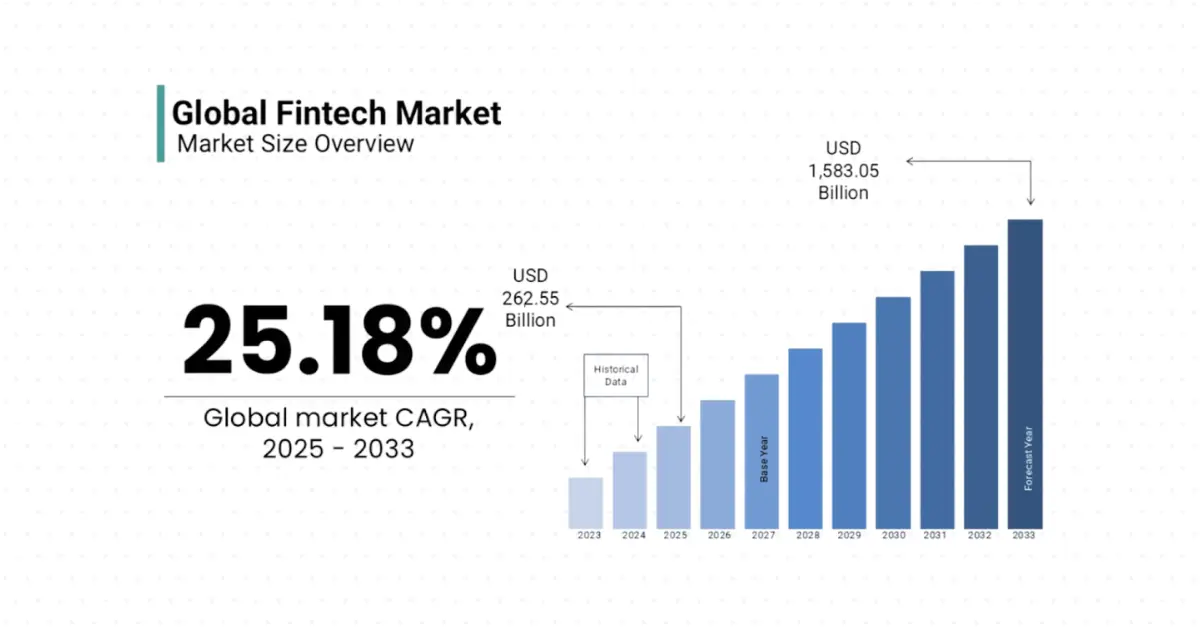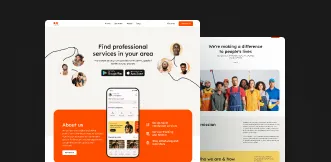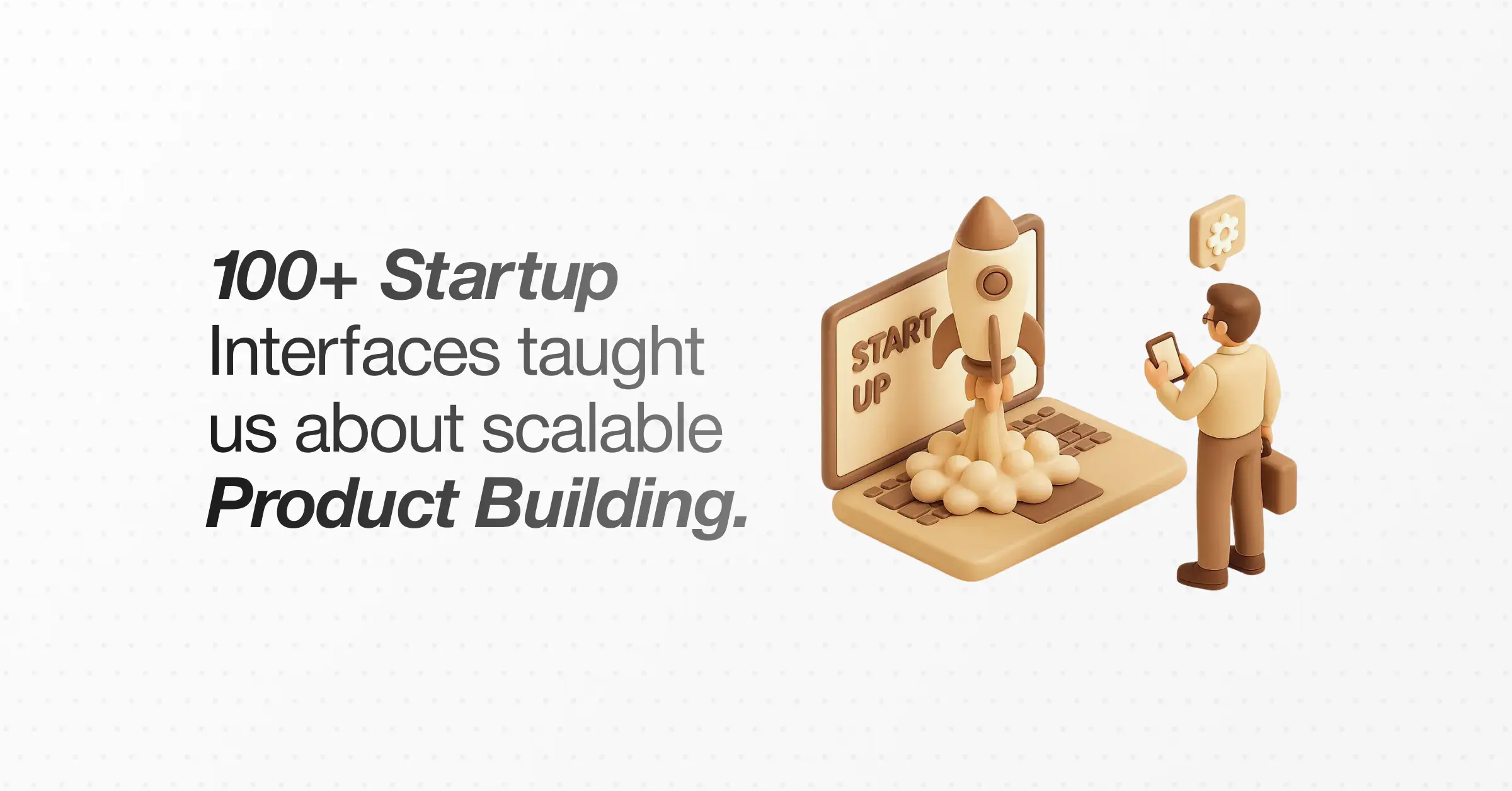Fintech
FinTech App Design Cost Guide: Best Strategies to Minimize Your Budget
October 6, 2025
May 21, 2025

Financial institutions need to understand FinTech app costs to plan projects well and meet customer needs.
As Global Market Report says, basic FinTech apps tend to cost from $30,000 to $40,000, but more advanced technology can push costs to $70,000 or more.
So, how would you balance the investments to get your top-notch FinTech app design?
No worries!
We have accumulated the whole idea of how you calculate your budget throughout the overall FinTech app design journey, balancing it with your other expenses.
Let’s learn.

FinTech App Design: How Much Does It Cost?
It is important to realize that in every deal, costs vary because of several factors, feature choices, and technology integrations during a development period.
Here is the summary of how much a Fintech App Design Company offers tailored services to their customers for a top-notch FinTech design building.
1. Banking Apps
Internet banking applications offer complete online currency services from setting up accounts to applying for loans minimizing the need to visit branches.
Designing a FinTech app costs range from $30,000 to $300,000, depending on which tier a user wants to flourish.
2. Lending Apps
The P2P lending field expands quickly as firms assist with digital loan applications within certain limits to provide faster and exact financial help.
FinTech loan app development costs range from $50,000 to $150,000.
3. Personal Finance Apps
Users turn to personal finance apps for better money control.
These apps help monitor income, calculate spending, create a plan, and follow it closely. They function like financial journals with complete transaction records.
The cost to produce a unique finance app through a FinTech development agency often ranges from $50,000 to $300,000.
4. Insurance Apps
Insurance FinTech companies offer adjustable-rate coverage via digital apps; carriers develop apps allowing easy policy access for clients and agents across different insurance lines.
Developing an insurance FinTech app typically ranges from $45,000 to $200,000.
5. Investment Apps
Some companies design investment software for specific users. Other examples include trading apps, cryptocurrency exchanges, and additional investing solutions.
Expect the development cost of a FinTech investment app to range from $60,000 to $120,000.
Still, the best FinTech app can be developed inside the stated cost range.
Read about the: How Much Does It Cost to Design an App in 2025 (A Guide For Founders)
FinTech App Design: Factors Affecting the Cost
When you develop a FinTech app, you face several decisions that will determine the ultimate cost of your app.
7 key factors and features that affect the budget include:
1. App Complexity
Your first decision should be about the kind of app you plan to build.
How complex it is?
The choice depends on what tech stack you pick, the design style, and how much time you have planned.
Choosing the complexity of your app will allow you to prepare a pre-budget for your FinTech app.
Better have an experienced team who can lead you through all factors and help you choose the best app design.
2. Features & Functionality
It helps to decide on all the FinTech app features you need ahead of time. You get to choose between advanced or basic features.
The relationship between functionality and complexity is very tight.
Be sure to do thorough research and choose only features that matter, as they control how complex the app becomes.
Besides, if you plan to make a banking app with basic user profiles, balance fetching, and login/logout options, for example.
The cost is smaller compared to an app with advanced features like real-time analytics, data fetching, and AI bots.
3. UI/UX Design
When making a strong user interface and experience, there are some core decisions to take.
Some prefer a neat, minimalistic FinTech application that gets the job done efficiently, while others choose a flashy app with extensive features.
The best digital banking UX design requires a thorough design approach, involving clear navigation, well-structured information, and efficient task flows to ensure user satisfaction.
Success in the app’s development is closely tied to attention to these design elements.
4. Security & Compliance
While you must follow mandatory compliance rules in most places, you can decide the security steps to include in your FinTech app.
FinTech regulations including AML(Anti-Money Laundering) and KYC(Know Your Customer) tend to increase costs beyond those of basic security like data encryption and SSL(Secure Sockets Layer).
The expense of developing a FinTech app increases as higher security measures and compliance requirements are introduced.
5. Platform Choice
Your next step depends totally on what you want for your app.
If you want to reach your targeted users, it’s important to be alive on Android and iOS.
However, building a FinTech app will cost two times more since the process is done separately for Android and iOS in native design.
That’s why cross-platform development can help you connect with more people, but it costs more than developing one native app.
However, the cost is worth it as being available to more people means more downloads and active users, making your app stronger in FinTech.
6. Testing & Quality Assurance (QA)
Experienced QA experts can help you get UX audit by focusing on optimization and making everything work more efficiently.
Running tests on your application helps you choose the best plan for deploying your services.
Because all the bug possibilities are tested, you can feel confident to release your app and wrap things up.
Some FinTech app makers do basic tests and quality checks to get the app market-ready, while others have full teams to make sure bugs don’t return and the app stays covered.
7. Post-Launch Maintenance
Keep in mind, your work continues even after the app is live.
That’s only the start! You need to maintain it properly after launch.
It’s up to you to pick between a special maintenance team after launch or having your in-house tech team manage it.
Your team handles the app’s functions, but a dedicated team looks after maintenance, bugs, feature updates, and security patches to make your app better with every new version.
It’s not easy to decide on these things when you haven’t done app development before.
These things combined influence the total cost of making a FinTech app, and understanding them will help you set a realistic budget.
FinTech App Design: How to Reduce Cost
It’s understood that FinTech apps need your time and a dedicated amount of money.
Here are 5 common factors that can help you save some money and make better choices during FinTech app creation.
.webp)
1. Start with a Minimum Viable Product (MVP)
Your first move should be to build a wireframe of your idea.
This lets you know if you need to change technology, design, or how the app works for users.
With an MVP, you can throw out features that don’t add value to your design.
2. Agency Over Freelancer
If you plan to get your FinTech app design a long-lasting one, it is recommended to outsource the whole process through an agency deployment instead of searching freelancer.
Getting a new person will cost you more than hiring a FinTech design team from top-tier as they will burnish your app diligently.
3. Using Cross-Platform Development Tools
If your goal is to build a FinTech app, choosing a cross-platform development approach is a good option.
It helps you cover two platforms while paying for only one development process.
4. Focus on Essential Features
Today, apps want to attract people with their stunning features. While this grabs attention, these features are hardly useful and cost a lot to develop.
Therefore, it’s better to concentrate on must-have features because they work well and don’t go over your budget.
5. Leverage Third-Party Solutions
Rather than building modules from the start, you should rely on third-party solutions like APIs.
In fintech, you need to win your users' trust. Payment gateway integration is one way to do that.
Besides these tips, connecting in a phone call with the top design minds from the US can help your FinTech app on a budget calculation.
.webp)
Ofspace – Affordable Fintech App Design Agency
Fintech app design within a set budget is a challenge for a design agency.
The uncertainty of app functions, technology, and rules causes such drawbacks.
Luckily, Ofspace offers an expert Fintech Design Service eradicating all your worries on this.
Ofspace is a global company that designs fintech apps through an experienced team with a great experience of half a decade.
Thanks to our expert in-house team, we keep costs minimal and deliver quality services at fair prices.
Contact us today for your next FinTech app design.
FAQs on FinTech App Design
Who dominates the fintech industry when it comes to market valuation?
With a valuation near $500 billion, Visa tops fintech. There are also 48 fintech unicorns sharing a market value exceeding $187 billion.
Which product claims the largest share of fintech’s market, and how many fintech stocks exist on Nasdaq?
With 25% market share, digital payments lead fintech, and Nasdaq features 463 fintech stocks, highlighting its importance.
What is fintech’s present valuation, and what growth trends are projected by 2028?
The fintech sector has a present valuation of $194 billion and is forecasted to hit $492 billion by 2028 with a 16.8% CAGR.
How much did fintech expand worldwide since 2017, and what’s expected for neobanking by 2027?
Global fintech grew over 100% since 2017, when it was near $90.5 billion. Neo-banking is forecasted to hit $9.2 trillion in transaction value by 2027.
What is the expected market size of fintech by 2028, and what is the forecasted user base for digital payments by 2027?
The value of the fintech market is forecast to hit $324 billion by 2028, while Digital Payments users may total 5,480 million by 2027.
How many fintech startups exist globally, and what is the typical age of their founders?
Across the globe, fintech startups number 30,000. The founders’ average age is no higher than 34 years.
What size does the fintech app market have today?
Recent statistics value the fintech app market at $179 billion, and projections say it will grow to $324 billion by 2028.
What country holds the top position in global fintech?
The U.S. houses nearly half of the top 20 fintech companies by market cap.
How many users continue using fintech apps regularly?
Fintech apps maintain 73% user retention after 30 days, but the number declines beyond that point.
How large is the US fintech market today
In 2025, the US fintech industry grow to roughly $350 billion, powered by digital payments and lending services.






